Heat moisture exchanger allows patients to breathe easier

By Beth Hohman, MS, CCC-SLP
Cleveland Clinic is a non-profit academic medical center. Advertising on our site helps support our mission. We do not endorse non-Cleveland Clinic products or services. Policy
A total laryngectomy is a life-changing ordeal for most patients, and postoperative complications can make matters even worse. At the Head & Neck Institute (HNI), we have taken steps to minimize postoperative sequelae, especially with respect to breathing and voice rehabilitation.
According to the American Cancer Society’s estimates, approximately 13,430 new cases of laryngeal cancer will be diagnosed in the U.S. in 2016, and approximately 3,620 patients (2,890 men and 730 women) will die from it.1
Total laryngectomy is a surgical option for patients with advanced laryngeal cancer. The operation involves the surgical removal of the larynx and the complete separation of the trachea from the mouth, nose and esophagus.
At Cleveland Clinic, the preferred method of voice restoration after a total laryngectomy is tracheoesophageal puncture (TEP). ENT surgeons perform primary TEP and place a voice prosthesis at the time of the laryngectomy. This facilitates a rapid restoration of speech.
Breathing and pulmonary health present a different challenge. During a total laryngectomy, the upper and lower airways become disconnected. As a result, the patient must breathe through a permanent tracheostoma in the neck. This results in loss of filtering, a loss of humidification and warming of inspired air. The loss of some nasal functions and changes in the intratracheal climate can also result in poorer pulmonary function and lead to frequent coughing, an increase in pulmonary secretions, shortness of breath and dryness or crusting of secretions. All these postoperative changes can diminish the quality of life of a patient who is already coping with a difficult situation.
In order to improve postoperative pulmonary health, several studies have investigated the use of a heat moisture exchanger (HME). These studies have documented several clinical benefits, including reductions in mucus production, coughing and the need for stoma cleaning. Other benefits include improved voicing and sleep and less anxiety and fatigue. At the HNI, we have been using the HME system for some time in the outpatient setting.
However, recent studies have shown that the sooner this system is initiated, the sooner the patient will reap its benefits. Therefore, our speech-language pathology (SLP) team teamed up with ENT surgeons, our ENT clinical nurse specialist, our acute care ENT nursing staff and the acute care respiratory therapy section to develop protocols for initiating HME use as soon as possible following surgery.
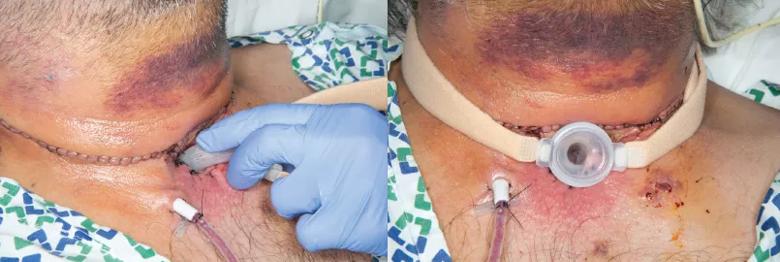
Figure 1. A: The LaryTube is placed in the tracheostoma. B: The tube is secured with the LaryTube holder.
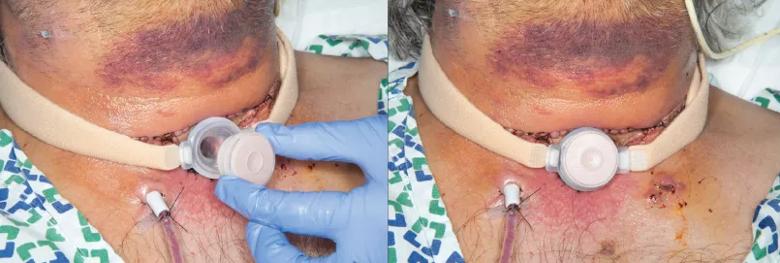
Figure 2. A: The HME cassette is placed into the tube. B: With the tube and cassette in place, the patient can breathe with optimal pulmonary benefits.
Working with Atos Medical, manufacturer of the Provox® Laryngectomy Pulmonary Kit (LPK), we customized the kit so that it contains all the supplies necessary to initiate HME as soon as possible after surgery. An LPK is issued to our patients when they leave the OR and kept throughout their hospital stay. Once a patient is weaned from the ventilator and extubated, he or she is ready to begin using the HME system. A LaryTube™ is inserted into the tracheostoma (Figure), and an HME cassette is placed into it. Immediately upon placement, patients are able to receive the maximum pulmonary benefits and begin their journey to recovery.
In addition to promoting better respiration, the SLP team has been able to document that early initiation of the HME system leads to an easier and faster transition to hands-free tracheoesophageal voicing.
We in the SLP service are proud of our team’s accomplishments, which truly improve the quality of life and the speed of recovery of our total laryngectomy patients.
Ms. Hohman is a clinical speech-language pathologist on Cleveland Clinic’s speech-language pathology team in the Head & Neck Institute.

Research on children with UHL explores the quality-of-life benefits and outcomes of cochlear implants
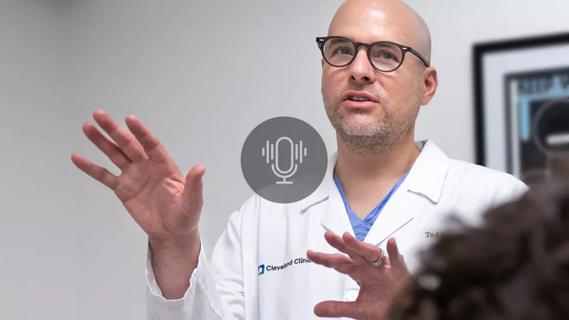
A look at how custom-fitted oral appliances work and when they’re a good fit for patients
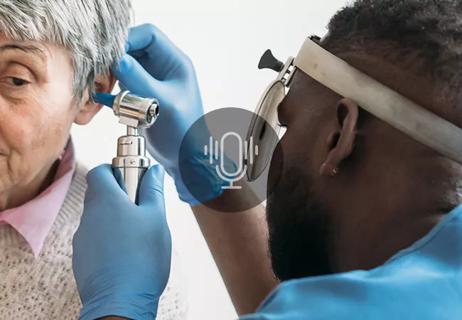
Hearing loss and its treatments are often misunderstood by both the public and healthcare professionals
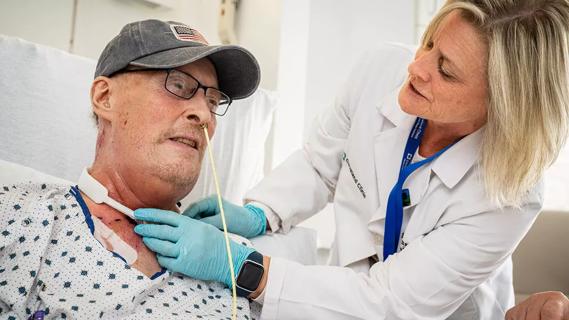
Modified Barium Swallow Study and Flexible Endoscopic Evaluation of Swallowing can both be used to diagnose dysphagia, but it’s important to understand their advantages and disadvantages
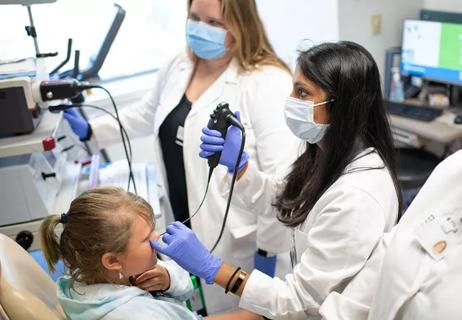
By working in tandem, a pediatric otolaryngologist and speech-language pathologist can diagnose conditions and develop treatment plans in the same visit

Because EILO is a relatively new condition, educating care providers to help diagnose and treat earlier is critical

A Cleveland Clinic speech-language pathologist describes the techniques she uses with her patients and how new research reinforces that patients should be driving care decisions

The treatment is simple and effective for many patients, but more research is needed to determine the exit-strategy from repetitive injections